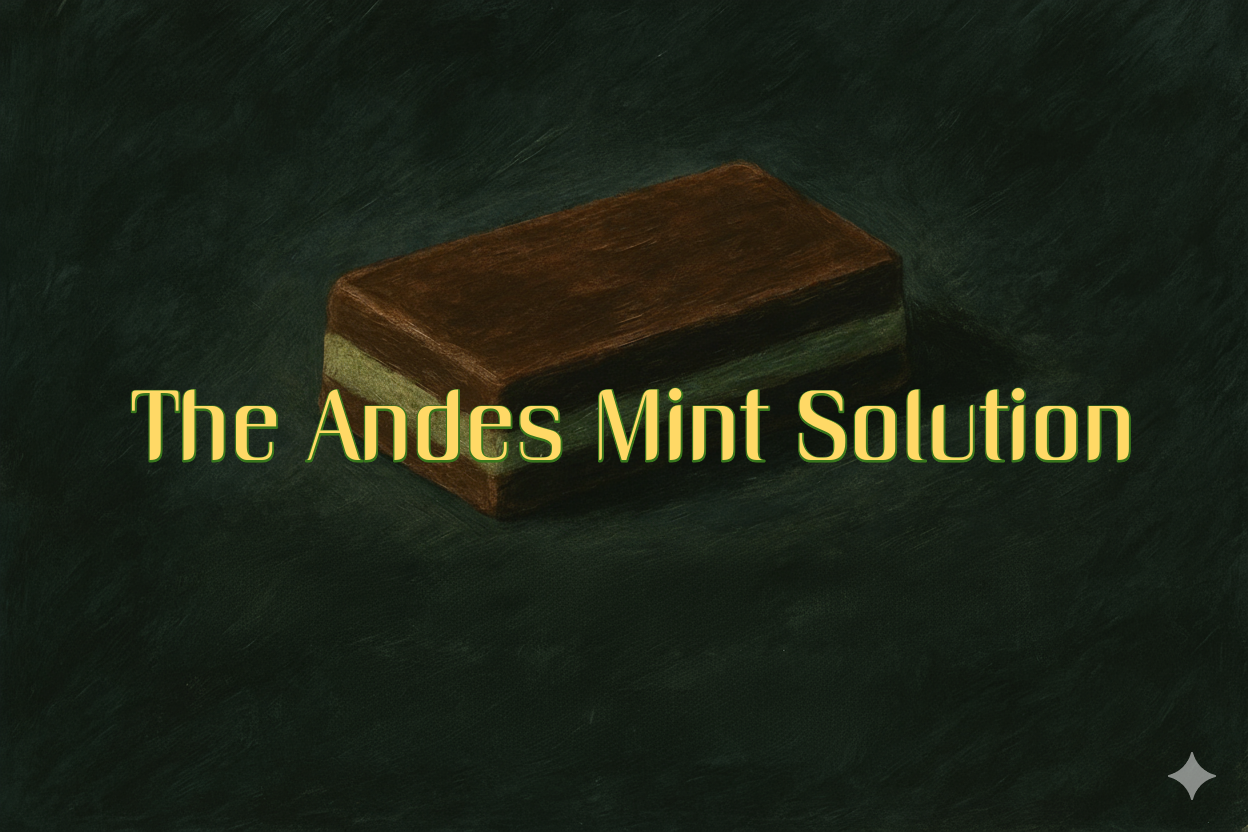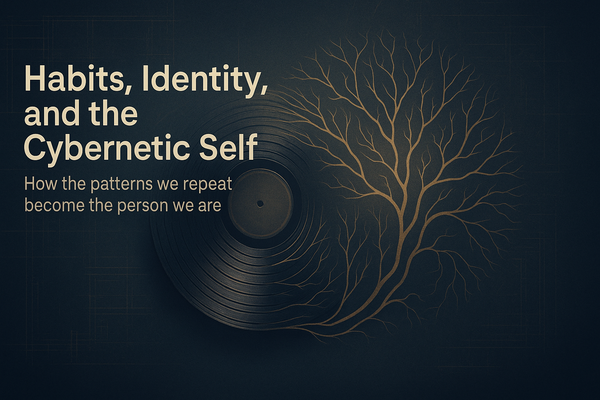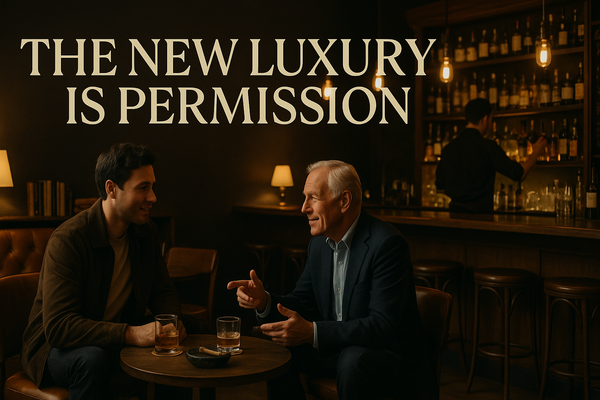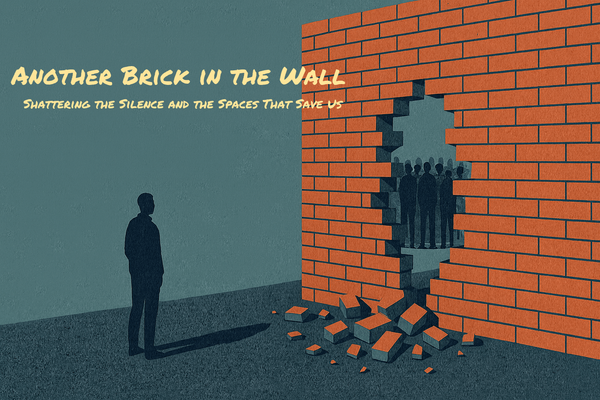The Andes Mint Solution
Most brand experiences are forgotten within hours. Some stick for decades. What makes the difference?

The distinction between the past, present and future is only a stubbornly persistent illusion." ~Albert Einstein
Most brand experiences are forgotten within hours. Not because customers don't care. But because most experiences are designed to be smooth, efficient, and completely forgettable.
But you remember the restaurant from childhood where they pressed an Andes Mint into your palm as you left. You remember it decades later. You can taste it right now.
Why does a three-cent mint create a permanent memory while a $50 meal vanishes by morning?
The answer lies in a phantom window of time that almost no brand knows exists.
The Phantom Window
Here's what most brands don't understand: the experience doesn't end when the transaction ends. That's where it starts.
Your brain doesn't file experiences as permanent memory in real-time. For approximately 90 minutes after something happens, your hippocampus is still processing, deciding what this meant, how to remember it, what story to tell.
During this phantom window, memory is malleable. Still being written. Not yet permanent.
Most brands optimize the transaction and abandon the phantom window. They're perfecting the moment customers can see while ignoring the 90 minutes where memory actually forms.
Worse: during those 90 minutes when your brain is consolidating the restaurant meal (Experience A), you're simultaneously having other experiences (Experience B). Checking your phone. Having conversations. Seeing billboards. And Experience B doesn't just compete with Experience A. It rewrites it.
You're never just in the moment. You're always living two experiences at once.
The meal you remember isn't the meal you had. It's the meal your brain constructed during the 90 minutes after, shaped by everything that happened during consolidation.
Texture Is Sticky. Smooth Is Forgettable.
Walk into most businesses and you'll encounter optimization for smoothness. Frictionless. Streamlined. Minimal.
Your brain discards smooth experiences immediately. No hooks. No grip. Nothing to hold.
Memory needs texture: sensory richness, emotional weight, minor imperfections that signal "this is real."
Our brains interpret minor imperfections as what makes a thing real. The slight wobble in a handmade cup. The micro-pause before someone answers genuinely. Handwriting that's not quite straight. These aren't flaws. They're proof a real human cared enough to make something specifically for you.
Perfection triggers suspicion. Your pattern-recognition systems, evolved over millions of years to detect authentic versus deceptive signals, register flawless execution as manufactured. Smooth. Slippery. Forgettable.
Think about music. The silence between notes is where music actually lives. Auto-tuned perfection might be technically flawless, but it has no soul. No texture. Nothing sticky.
Jazz musicians understand this. The imperfections aren't flaws. They are what makes the experience relatable and human.
Brands obsessing over perfect experiences are auto-tuning customer interactions. Removing the human variations that create texture. Optimizing for smooth when memory needs friction.
Authenticity creates texture. Inauthenticity creates smoothness.
The Three-Cent Memory
Many restaurants press an Andes Mint into your palm as you leave. That rectangular chocolate mint with the green layer.
Decades later, you can still taste it.
That mint does something remarkable: it becomes the gravitational center around which the entire meal memory consolidates. Even mediocre meals get pulled toward positive because the mint adds sensory weight at precisely the right moment.
It arrives in the first 30 seconds after the meal ends. Exactly when your hippocampus begins consolidation. Sweet, minty, chocolate engaging multiple taste sensations. Novel enough to trigger dopamine. Authentic enough to signal care. Physical enough that you're unwrapping and tasting it while your brain actively processes the meal.
The mint becomes the frame. Everything else gets remembered through it.
Meanwhile, many restaurants push QR codes for payment. You stare at your phone during the critical seconds when consolidation begins. No goodbye. No human touch. No texture. Just you, alone with a screen, during the moment that should bridge into memory.
The void where the exit should be.
The Andes Mint costs three cents. The QR code saves labor. One creates a memory you taste decades later. The other creates nothing.
That's the difference between understanding the phantom window and optimizing for the wrong thing entirely.
The First 30 Seconds That Rewrite Everything
The first 30 seconds after an experience ends is the opening line of the story your brain tells itself.
Warm goodbye, mint in your palm? Your brain begins consolidating as "they cared about me even as I left." Everything in the next 90 minutes orbits this. The meal becomes "that place that makes me feel valued."
Staff ignoring you while prepping for the next seating? Your brain consolidates "transaction complete, I don't matter." The meal becomes "it was fine" by morning.
Same meal. Same food. Same service. Completely different permanent memories.
Luxury hotels have doormen who remember your name as you leave. Great restaurants have chefs say goodbye. Apple employees walk you to the door. The Andes Mint appears in your palm.
This is not politeness, it's engineering. They're adding gravitational mass at the exact moment when consolidation begins.
The exit isn't the end. It's the bridge into the most important 90 minutes.
Building Gravitational Pull
But what happens during those 90 minutes? The phantom window isn't quiet. It's filled with noise.
After dinner, you're in your car, checking messages, having conversations, thinking about tomorrow. Your brain is bombarded with inputs during the exact window when it's deciding what the restaurant meant.
Weak experiences have no gravitational pull. The meal competes equally with the Uber receipt, work email, random thoughts. Memory fragments and scatters.
But experiences with mass (rich texture, emotional intensity, novelty, authenticity) create their own field. Everything in the phantom window gets pulled into orbit. Inputs don't compete. They reinforce.
Here's what's remarkable: subsequent emotional experiences can retroactively strengthen memories of related events. The Andes Mint doesn't just create its own memory. It arrives during active consolidation and adds gravitational mass backward in time. The mint's sensory richness during the phantom window pulls the entire meal memory toward positive.
What happens after doesn't just matter. It rewrites what happened before.
Twenty minutes after dinner, driving home with that mint lingering, you describe the meal to someone. That narrating isn't just sharing. It's consolidating. Each description encodes deeper. The mint created texture. The exit created weight. The retelling adds coherence.
By consolidation's end, the memory isn't "we went to dinner." It's "that place that made me feel special."
Or: thirty minutes after the same meal, a generic email arrives. "Click to review and earn rewards."
Your brain, still consolidating, receives: "You're a data point."
The meal loses mass. Other thoughts compete equally. By morning: "we went out, it was fine."
The phantom window is where loyalty actually forms. Not during the transaction. During the invisible 90 minutes after.
Brands That See It
At Eleven Madison Park, restaurateur Will Guidara overheard diners lamenting they were leaving New York without trying a classic street hot dog. He raced out, bought hot dogs from a vendor, had his Michelin-starred chef plate them, and served them to stunned guests. They later said it was the highlight not only of the meal but of their entire trip. A two-dollar hot dog. That's gravitational pull. Guidara inserted texture, novelty, and authentic care at precisely the moment when the meal memory was being consolidated.
At Nordstrom, when a customer realized her wedding ring diamond had fallen out somewhere in the store, loss prevention manager Eric Wilson spent hours searching with her. After she went home empty-handed, he refused to give up. He got two building services workers and together they rummaged through every vacuum cleaner bag in the building until they found it. During the phantom window when grief and panic were being processed, Nordstrom became woven into a narrative about people who genuinely cared. The customer later said: "I am locked in. You are not going to lose me."
Ritz-Carlton empowers employees to spend up to $2,000 per guest for memorable moments. The genius isn't the spending. It's understanding that these stories get retold during consolidation windows, strengthening the memory each time..
These brands don't optimize transactions, they architect phantom windows.
The Inside Surfaces
Ask someone how many sides a box has. They'll say six. But a box has twelve sides. Six outside, six inside.
Most brands can only see the outside. The transaction. The visible moment. They optimize what customers experience in real-time and ignore what happens after customers leave.
But the inside surfaces, the invisible ones, are where memory actually forms.
Most brands perfect what customers see during the experience. Product quality. Interface design. Service speed. The outside surfaces.
The inside surfaces are what happens when customers leave but their brains are still processing. The confirmation email. The follow-up text. The Andes Mint. The silence when acknowledgment was expected.
These inside surfaces are where memory becomes permanent.
Your competitors perfect transactions and abandon the 90 minutes where loyalty is forged. They optimize what customers see and ignore what customers remember.
You're not fighting for attention during the experience. You're architecting memory when memory is being formed.
How To Make It Stick
Creating memorable experiences isn't about perfection or budget.
Engage multiple senses. Let humans interact unscripted. Allow imperfections that signal genuine care. Add emotional weight through relevance, novelty, unexpected generosity. Make the first 30 seconds after an experience textured, authentic, memorable. Be present in the phantom window with gestures that add gravitational mass.
The Andes Mint costs three cents. But it's what you remember decades later.
Your competitors can't see the phantom window. They're optimizing transactions while memory is being written in the invisible 90 minutes after.
But you've seen around the corner.
Memory is constructed, not recorded. Texture matters more than perfection. Authenticity creates stickiness. The exit opens the most important window. What happens after shapes what gets remembered about before.
The phantom window exists in every customer experience.
"We do not remember days, we remember moments." ~Cesare Pavese
What will you do with what you now see?
The memory of reading this is entering your phantom window right now. What you do in the next 90 minutes will determine whether these concepts stick or slip away.




